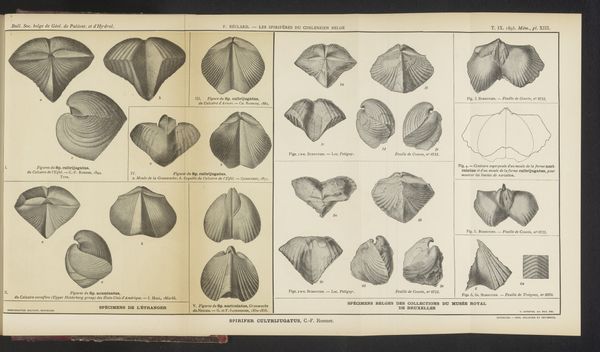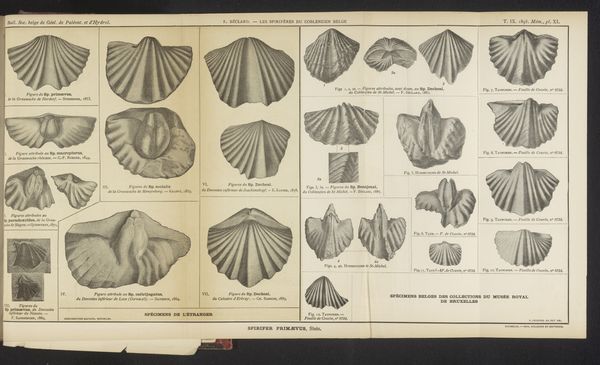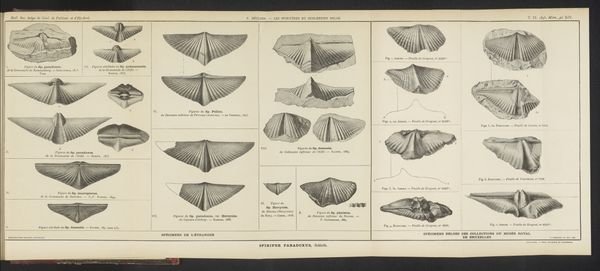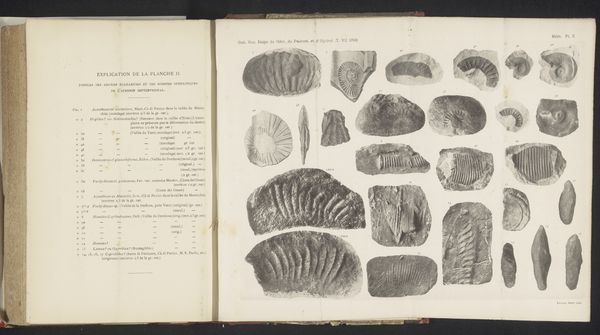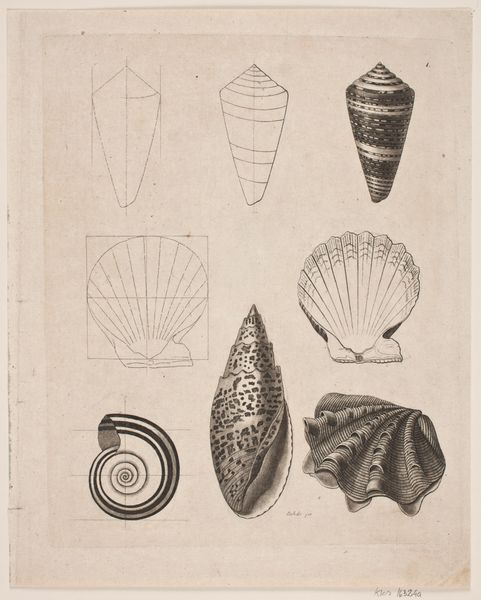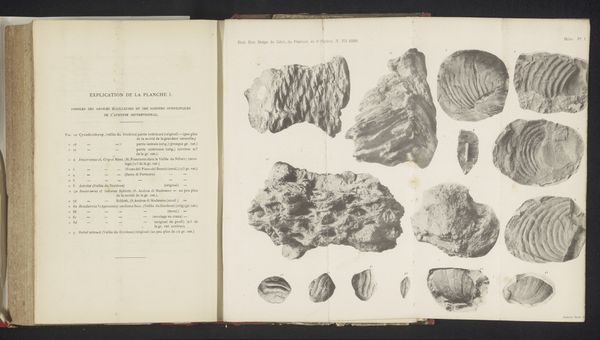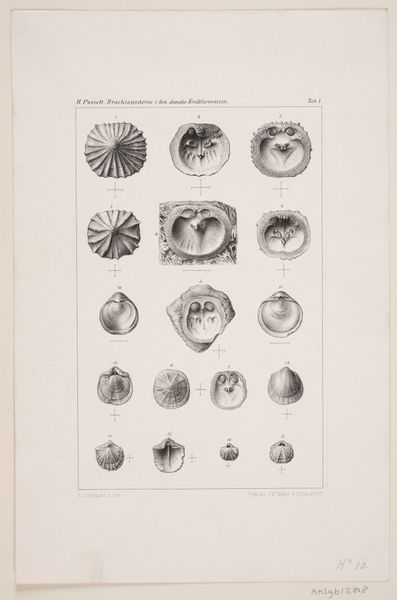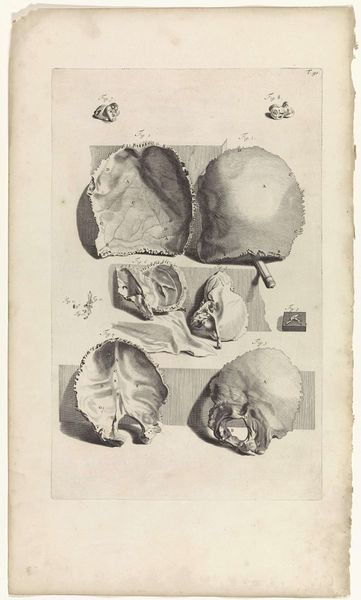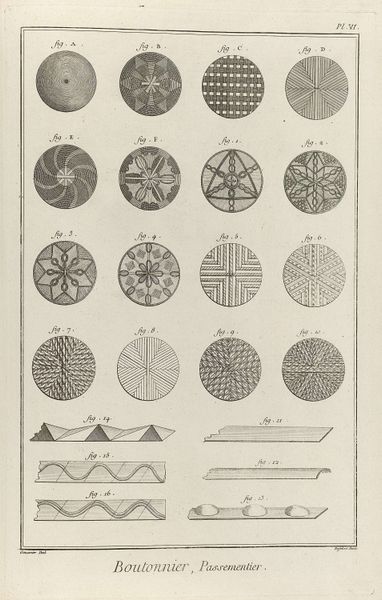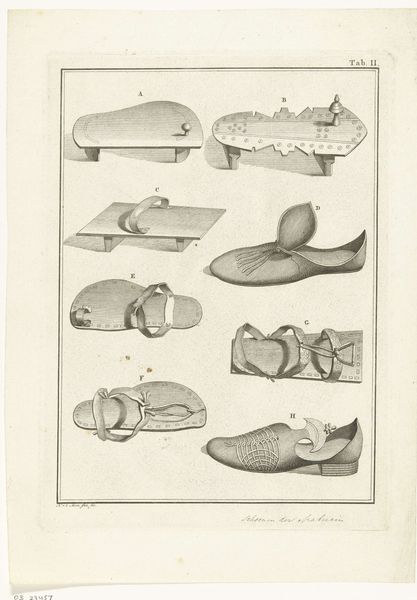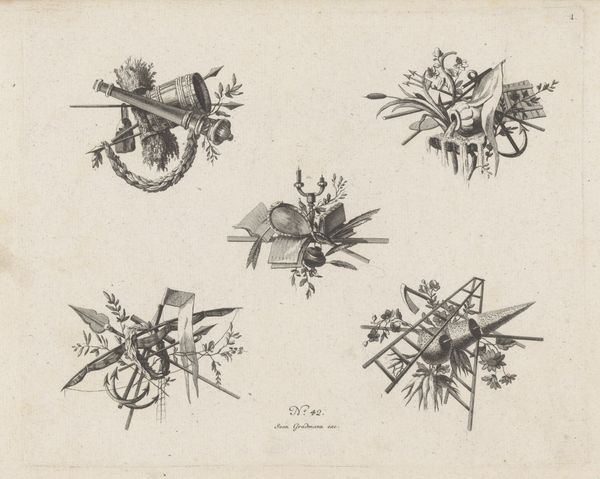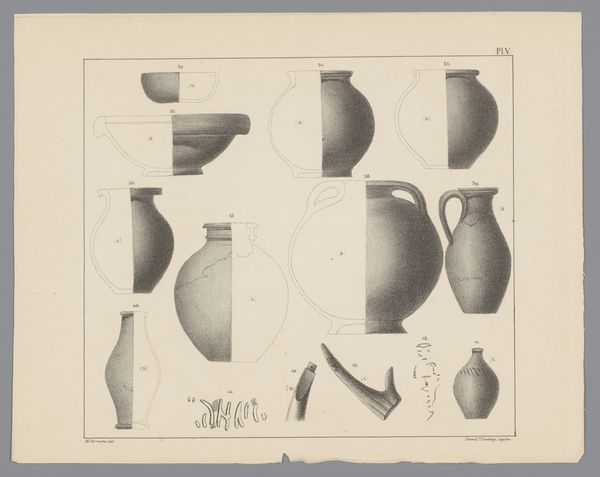
print, graphite
# print
#
geometric
#
graphite
Dimensions: height 215 mm, width 295 mm
Copyright: Rijks Museum: Open Domain
Editor: This print, dating back to before 1894, is called "Verzameling gefossiliseerde armpotigen, Spirifer," and it appears to be graphite on paper. The artist is anonymous, and the layout resembles an organized, scientific chart. What stands out to you in this piece? Curator: I'm immediately drawn to the way this work highlights the process of reproduction. Think about the labor involved in creating a print like this—the meticulous transfer of information, the multiple impressions required, and the way it democratizes knowledge about these fossils. Editor: Democratizes knowledge? Curator: Absolutely. Before widespread photography, prints like these were vital in disseminating information. It's not just about the final image, but about the entire system of production and distribution. Consider the paper itself—its source, its cost—and how it influences who has access to this information. Editor: So, you see it less as a static image and more as a node within a network of labor and materials. Curator: Exactly. And the geometric arrangement—the organized boxes and labels—speaks to the scientific and social order of the time. It implies a desire to categorize, understand, and ultimately control nature through a system of material inscription. What impact does this piece have on you? Editor: Well, I initially saw it as just a historical document, but now I’m also considering its role in making scientific knowledge accessible and the socio-economic factors tied to the use of graphite and printmaking, things I would never have noticed without your materialist lens! Thanks!
Comments
No comments
Be the first to comment and join the conversation on the ultimate creative platform.
